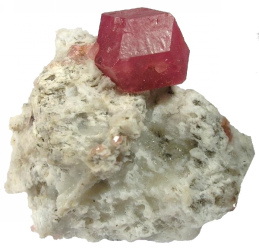Translations that render this word as "emerald" and not carbuncle include the ASV, ESV, HBFV and King James Bible. At least six other translations render the word as "turquoise."
Nophek is also the word used for the eighth of nine Bible stones that adorned the symbolic King of Tyre (Ezekiel 28:13) who represented Satan the devil. Those that render the word as "emerald" include the ASV, ESV, HBFV and KJV. The HCSB (which states it could also be a garnet or malachite) and at least five other Bible translations render the word "turquoise."
An article on gemstones in the 1913 Catholic Encyclopedia states the following regarding the red garnet.
"The ancient authors are far from agreeing on the precise nature of this stone. It very probably corresponds to the anthrax of Theophrastus, the carbunculus of Pliny, the charchedonius of Petronius, and the ardjouani of the Arabs. If so it is a red glittering stone . . ."

A case can be made for this gemstone to be correctly referenced as a carbuncle in God's word. This word, in English, is a generic term for any red gemstone. It usually refers to, however, a red garnet (Wikipedia).
"The Vulgate, Jerusalem Targum, Josephus and most authorities agree with the translation of nophek into "carbuncle" . . . While garnets are found in many colors, those of deep-red color were highly prized in ancient times" (Gemstones in the Breastplate, pages 18 - 19).
Concerning the ancient reference to garnets the following is stated.
"The garnet is one of the oldest stones known. In some of the most ancient mummies discovered in Egypt are found necklaces and other jewels containing garnets . . . According to the Talmud, the only light which Noah had in the Ark was afforded by a carbuncle" (Diamonds, Pearls and Precious Stones, page 90)
Nophek likely refers to a red garnet in the High Priest's breastplate, although a case could be made it refers to a turquoise stone given our translation comparison.
Folklore
Stones that are red like the color of blood, such as garnets and rubies, were believed to protect the wearer from wounds (especially in battle). Carbuncles were also, in ancient times, thought to protect seafaring people in tumultuous weather and keep them from drowning.
The eyes of the mythical beast known as the dragon were thought made of these carbuncle (red garnet) gemstones. The stone was also thought to be a "heart stimulant" which supposedly could make a person so angry that it could lead to a stroke (Curious Lore of Precious Stones, pages 33, 39, 61 - 62).